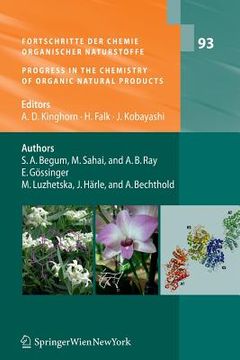Share
fortschritte der chemie organischer naturstoffe / progress in the chemistry of organic natural products, vol. 93 (in English)
Mahendra Sahai
(Author)
·
A. Douglas Kinghorn
(Illustrated by)
·
Heinz Falk
(Illustrated by)
·
Springer
· Paperback
fortschritte der chemie organischer naturstoffe / progress in the chemistry of organic natural products, vol. 93 (in English) - Kinghorn, A. Douglas ; Sahai, Mahendra ; Falk, Heinz
$ 208.41
$ 219.99
You save: $ 11.58
Choose the list to add your product or create one New List
✓ Product added successfully to the Wishlist.
Go to My WishlistsIt will be shipped from our warehouse between
Thursday, June 27 and
Friday, June 28.
You will receive it anywhere in United States between 1 and 3 business days after shipment.
Synopsis "fortschritte der chemie organischer naturstoffe / progress in the chemistry of organic natural products, vol. 93 (in English)"
Lignans, by convention, are a group of natural products that are formed by linking two phenylpropanoid units (C C units) by oxidative coupling. Most importantly, in 6 3 a lignan, two (C C units) are bound through the central carbon of their side chains, 6 3 0 i. e. the 8 and 8 positions (1, 2). The occurrence of C C -dimers, linked at sites other 6 3 0 than the 8-8 positions, is also known and these compounds have been termed neolignans (3, 4). As these two groups of compounds have close structural as well as biosynthetic relationships, they are often associated together and incorporated under the general term "lignan" (5). The diverse structural categorization of true lignans and of a few neolignans is presented in Fig. 1. Through the years, several review articles or books covering different facets of lignans, including their ch- istry (6, 7), biogenesis (8), synthesis (9), and biological activities (10) have been published. Enduring research for the investigation of secondary metabolites of plants has evidenced some compounds that are biogenetically related to true lignans or neolignans but bear some features not discerned in conventional lignans. These compounds or groups of compounds have been termed as "non-conventional lignans", and include coumarinolignans, ?avonolignans, and stilbenolignans. The non-conventional lignans, like the conventional ones, have two C C units linked 6 3 together but have additional structural features to place them also under the category of coumarins, ?avonoids, or stilbenes.

